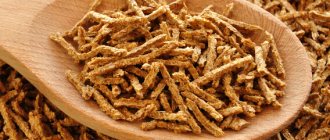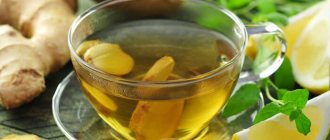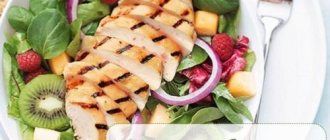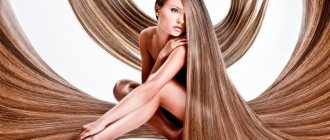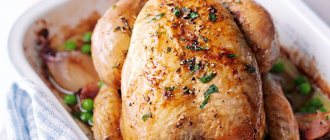How do we understand the phrase “proper nutrition for the skin”? In beauty salons, on the Internet, on TV, we are promised beauty and youth, and are offered new effective procedures. But do they really work? And are all these remedies, diets and painful trips to specialists really necessary? Let’s look at them in more detail later in this article. And if you are generally interested in the topic of healthy food and self-care, then go to our website! We have many more interesting and useful articles waiting for you.
Basic nutrition rules
It is impossible to develop an effective diet that helps the skin stay beautiful and healthy without information about genetic characteristics.
There is even a special section in genetics that studies the influence of genes on the properties of the skin and the features of the external manifestation of age-related changes. It's called dermatogenetics. For example, dermatogenetics can tell us about the rate of collagen production and destruction, vascular strength, and susceptibility to bone destruction. But this is not all the information. Genetic analysis can tell us about glycation, photoaging, antioxidant protection, how the lack of nutrients and microelements affects the condition of the skin, and how prone it is to inflammation or allergies.
A reasonable question is what to do with all this information? The answer is simple - choose those products that will help maintain external youth and health.
Products that are good for your skin
Nutrition for perfect skin is one of those external factors that plays a very important role. A good example is collagen synthesis. Collagen is a key structural protein that makes it elastic and strong. It is constantly produced in the body to “repair” damage to the dermis. Its synthesis is a complex process; it requires various substances and trace elements.
Vitamin C plays the main role in the production of this protein; it is necessary for beautiful skin. The thing is that with a lack of this useful element, poor collagen is produced, looser and less durable. Such collagen is destroyed faster and performs its main function worse.
The COL1A1 gene is responsible for the process of assembling collagen fibers; it determines what the balance will be between poor-quality and good-quality collagen. If there are changes in this gene, then the parity between the two types of protein will be broken. And you can return it to normal with the help of vitamin C!
It follows that nutrition to maintain beautiful skin is primarily products that contain ascorbic acid. Richest in vitamin C:
- Acerola (Barbado cherry)
- Dry rosehip
- Red bell pepper
- Kiwi
Another example of how diet affects appearance is fat. Many exclude them from consumption during a diet. And completely in vain. After all, omega-6 and omega-3 fatty acids contribute to the preservation of epidermal cells. Most of them are found in walnuts, flax seeds and fatty fish.
Stages of body cleansing
Colon cleansing results
Cosmetics used to combat acne can be disappointing. Because the cause of acne is the body's slagging and the accumulation of toxins in it. Therefore, not only the skin, but also the body needs cleaning. Particular attention is paid to the intestines, liver and blood.
Cleansing is carried out at home and requires systematicity, time and consistency. First of all, intestinal cleansing is carried out, which involves switching to a healthy diet and carrying out certain procedures. Important points:
- food should contain a sufficient amount of fiber;
- mandatory compliance with the drinking regime;
- to normalize the intestinal biocenosis, it is recommended to use “live” yoghurts and preparations “Bifidumbacterin”, “Linex”, “Laktiale”;
- To cleanse the intestines, you can use cabbage brine or laxatives.
Liver cleansing
After adjusting the functioning of the intestines, you should “tackle the liver.” To do this, you can use drugs that improve the functioning of this organ and remove bile. There are many traditional medicine recipes that should be used in practice only with the consent of a doctor.
In parallel with this, it is recommended to take hepatoprotectors, including those of natural origin (oats and all dishes prepared on its basis).
Blood purification
It is carried out last, and most often, this process occurs automatically, after a person has taken care of cleansing the intestines and liver. To cleanse the blood, you can use both herbal preparations and ordinary garlic, which you need to eat a couple of cloves a day. A great way to cleanse your blood without unnecessary odors is a glass of lemon water in the morning and a glass of chamomile tea in the evening.
Restoration of sebum composition
The secretion of the sebaceous glands (sebum) consists of wax, styrene, cholesterol, fatty acids, triglycerides and other substances. “Problem” sebum (sebum) has the “wrong composition”. It contains less Omega-3 and Omega-6 fatty acids, which have anti-inflammatory properties.
And there are more Omega-9 fatty acids, which make sebum more viscous. This leads to the fact that the pores become clogged with sebum, and pimples and comedones appear on the skin, deprived of natural protection against inflammation. This problem can only be solved by adjusting the diet.
Drinking regime
Now we know very well that maintaining water balance is very important. But the condition of the epidermis and hair also depends on it. However, this process has its own nuances. The most important thing is that skin hydration is associated with many factors and the amount of water you drink, although important, is not fundamental. As proof, a simple example can be given: skin type does not depend on the amount of fluid in the body, but is determined by the rate of moisture passage through cell membranes.
If we talk about hydration of the epidermis, then the most important thing is not the liters of water you drink, but internal factors. So, a whole complex of different molecules, which is also called natural moisturizing factor (NMF), is responsible for maintaining water balance. It mainly consists of free amino acids, their derivatives, inorganic salts, sugars and urea. All these elements are located in the stratum corneum of the skin, attracting and retaining moisture.
In addition to NMF, aquaporins have a great influence on the hydration of the dermis. Abbreviated as AQP. These membrane proteins act as a kind of “molecular tunnel” for moisture, helping it enter the skin. Epidermal cells contain predominantly AQP3, which transports water and glycerol, which help the dermis maintain hydration. The AQP3 gene of the same name can tell you how efficiently water and glycerol dissolved in it are transported, as well as how effectively the stratum corneum protects the lower layers from excess moisture loss.
Vitamins
When talking about nutrition for healthy skin, one cannot help but touch on the topic of vitamins. Several microelements should be highlighted here:
- “C”, which in addition to the production of collagen is involved in the synthesis of elastin and helps with antioxidant protection.
- “A” is extremely beneficial for the health of the skin, as well as bones, hair, and the normal functioning of the immune and reproductive systems.
- “D”, responsible for the renewal of the stratum corneum of the skin and hair growth.
- "E" is important for protecting cell membranes from free radicals.
- And finally, B vitamins numbered 6, 9 and 12.
The lack of even one vitamin can negatively affect the condition of the skin. Moreover, genetics plays a huge role in the deficiency of beneficial microelements. Thus, changes in the SLC23A1 gene, a molecule that transports vitamin C and is involved in its absorption from food, leads to a decrease in the concentration of ascorbic acid. And this affects the production of collagen in the body. The result is flabby skin that does not cope well with microdamages.
Another gene, BCMO1, encodes an enzyme that converts carotenoids into vitamin A. But in part of the world’s population, beta-carotene (a precursor to vitamin A, found in carrots and pumpkin) is not converted into this useful microelement. Therefore, despite eating the right foods, a person may lose health and beauty in appearance.
Products harmful to skin
Of course, food can both help and harm the skin. Moreover, if there is a predisposition, garbage food can cause inflammation, allergies and dermatitis. Below we have collected the main food “villains” that harm the skin.
Sweets
Sweets themselves are not so dangerous, except in cases where, due to individual predispositions, eating them results in allergies and skin rashes. The secret weapon of sweets is creating a comfortable environment for various harmful microorganisms. After all, carbohydrates, which are found in abundance in sweets, are wonderful food for pathogens of a wide variety of diseases.
Salty foods
The main harm that salt can cause to the body is due to moisture retention. Which in turn is associated with a variety of edema, due to which the skin stretches and looks bad. Those same bags under the eyes and a swollen face in the morning are all the tricks of excess fluid that was retained by the salty foods you ate.
Coffee
This is not to say that coffee is harmful to appearance. Yes, it may contain various alkaloids, which are toxins and pose a danger to all cells of the body. But at the same time, the drink made from grains contains magnesium and other useful minerals, as well as a decent amount of antioxidants.
It is important not to forget one thing - not everyone is genetically suited to excessive coffee consumption. Some people can drink liters of it, but for others, after just a couple of cups, the risk of cardiovascular disease increases significantly. The CYP1A2 gene, which we look at as part of our Wellness report, will help you get accurate information on this matter.
Fast food
Fast food and proper nutrition for beautiful facial skin and other parts of the body are absolutely incompatible. They are simply two opposite poles. Fast food is harmful for many reasons. It contains dangerous carcinogens - trans fats, provokes the appearance of cellulite, and instead of useful microelements it supplies the body with “empty” calories, which leads to overeating and excess weight. Also, few people know that flavor enhancers, in particular monosodium glutamate, retain moisture.
Alcoholic drinks
We all know that alcohol is harmful. And for the epidermis it is the most dangerous enemy, whose negative impact can only be compared with fast food.
Let's start with the fact that alcoholic drinks cause dehydration. How does this affect the skin? They dry out, which means they crack, and wrinkles also appear. Another point is the destruction of vitamins by alcohol. They, as we remember, help the body produce elastin and make the skin beautiful and elastic. Add to this the enlargement of pores and the appearance of new rashes, and you get a whole bunch of problems. Any beneficial nutrition for facial skin can be canceled out by alcohol abuse.
Rules for home skin care on the face
I feel like a deer with branchy antlers when I have to deal with hydrophilic oil lovers.
- “You can’t remove photoprotective cream well without them”
- “But I don’t get acne from them”
- “We wash it off with gel”
- “Fats are emulsified”
The essence of hydrophilic oil lies in its composition - water, oil, emulsifier. The latter is needed so that oil and water mix into a single substance, as happens in our usual face creams or food products, for example, mayonnaise.
Misconceptions:
First misconception:
Emulsified oil is no longer oil. Seriously? What is it then?) If you drip some cream or mayonnaise onto your blouse, won’t there be a greasy stain left? The fat remained as it was, otherwise such amazing cleansing properties would not have been seen.
Emulsification is not the breaking down of fat into something there, but its grinding to make it easier to mix with other ingredients (in cosmetics), absorption and assimilation (in the body).
It’s not for nothing that the Korean creators of this product recommend washing off hydrophilic oils with foam or gel as a second step. Such hydrophilic oils are just as likely to comedogenic as oil-based creams. In both cases, the fats are emulsified, but what’s the point, other than the fact that the product is convenient to use?
Second misconception:
And here the second misconception immediately appears - hydrophilics do not destroy the skin barrier. Of course, if you don’t wash it off (permissible for dry and normal skin), then there really won’t be any tightness after washing.
But we are talking about acne-prone skin, and here the second stage of cleansing (from oil) is foams and gels with various surfactants, which in fact will also strive to degrease the skin (read destroy the barrier) as without the use of oils. Plus, whether they will completely remove thoroughly rubbed oil from the skin is a big question.
IS IT TRUE:
It really cleanses the skin better from heavy makeup and SPF products than gels and foams. But it can be completely replaced with a safer option for acne-prone skin - micellar + gel/foam + toner/lotion.
My logic is simple. You can never say for sure that any cosmetic product is absolutely non-comedogenic. But, for example, a cleansing gel has almost no chance of acting as a provocateur, but coconut or olive oil has plenty of chances. And for a minute there are up to 90% of them in some hydrophilic oils.
I watch girl bloggers who talk about their experiences in treating acne and caring for problem skin. Many people love and praise hydrophilic oils, but none of them still have complete control over acne.
And this is not a stone in someone's garden. One can argue ad nauseam that many things can influence the occurrence of rashes, and I agree with this 100%.
Acne is truly a MULTI-factorial chronic disease. But I sincerely don’t understand why else add provocateurs to your basket if there are already plenty of them. Moreover, cosmetics are something that we can influence, unlike stress, for example.
Conclusion
Hydrophilic oils are very controversial products for skin with acne, in my opinion; practice shows that for most people with acne they aggravate the situation. Moreover, they can provoke a relapse out of the blue. Yes, there is some possibility that there will be no provocation, but I’m wondering if you are ready to test this for yourself?
Consequences of poor nutrition
A person who eats incorrectly will experience a whole bunch of different consequences. Of course, not only the skin will suffer, but also other organs. However, the first manifestations will primarily affect the appearance of the body.
Dark spots
The unexpected appearance of age spots is a complex and multifactorial process. Poor nutrition affects it only partially. However, a lack of vitamin B12 may well provoke increased melanin production. And this can affect the body in the form of age spots.
Dry skin
Dry skin is a very common problem in Russia. And its root most often lies in food. The fact is that, due to geographical features, our diet includes very few foods rich in Omega-3 and Omega-6 fatty acids. Namely, these fatty acids help preserve epidermal cells. Another element that promotes long cell life is lutein. It is found in abundance in spinach, peas and parsley.
Circles under the eyes
The cause of circles under the eyes may be the low rate of salt excretion by the kidneys and the accumulation of fluid in the body. And genetics may be to blame for this.
The ADD1 gene is responsible for the first, and CYP11B2 is responsible for the second. In addition to circles under the eyes, side effects of unfavorable variants of these genes can include swelling and increased blood pressure, as well as improper functioning of the kidneys and liver. In this case, you should avoid foods that contain a lot of potassium (potatoes, fruits and dried fruits).
Wrinkles
How does poor nutrition affect the appearance of wrinkles? It's simple - hamburgers contain extremely low amounts of vitamins and antioxidants - anthocyanins, flavonoids, copper and carotenoids. This provokes the appearance of wrinkles and general aging of the body.
What are the different acne diets?
Vegetarian
This method of eating may not bring the expected results if a person abuses not very healthy foods. A vegetarian diet involves not only avoiding meat, eggs and other animal products, but also avoiding bread, sugar, industrially produced sweets and carbonated drinks. Vegetarianism can save you from acne, provided that it appears due to stress, indigestion and poor diet.
Kefir
The point is simple: low-fat kefir can be drunk in unlimited quantities. Additionally, green tea, still mineral water, fruits and vegetables should be included in the diet. At most, you can “last” a week on this diet, in the absence of diseases of the digestive system.
Buckwheat
Requires mandatory adherence to a diet for 7-14 days. A sample menu looks like this:
- breakfast: buckwheat cooked in water without salt, a slice of stale black bread with cheese, tea;
- lunch: a glass of any juice;
- lunch: vegetable soup with meat and vegetable salad;
- afternoon snack: big green apple;
- dinner: buckwheat porridge and boiled fish.
Gluten-free
According to Dr. Frank Lipman, the abundance of gluten in food negatively affects the condition of the skin and provokes the appearance of acne. Gluten-containing products can be replaced:
- brown rice;
- corn;
- buckwheat;
- potatoes;
- cabbage;
- quinoa.
Elimination
An option for those who experience acne due to allergies. The essence of the elimination diet is to consistently eliminate foods from the diet that can provoke an allergic reaction. By giving up the irritant product, you can get rid of acne forever. The main task comes down to identifying the allergen, which may require an indefinite amount of time.
What do world stars eat?
Appearance for world stars is more than just appearance - along with acting, it is one of the most important tools necessary for their professional activities. It is not uncommon for an actor to repeatedly gain and lose weight during his career, use tons of makeup, and at the same time maintain his skin in perfect condition. There are many vegetarians and even raw foodists among Hollywood stars. So, which products are the most popular among celebrities?
- Avocado is recommended by Victoria Beckham, both for food and for cosmetic masks.
- Milkshakes with nuts, bananas and blueberries - a recipe from the popular Korean singer Goo Ha Ra.
- Another Korean beauty, the famous actress Ko Hyun-jung, prefers to give up spicy, salty and smoked dishes and wash everything down with grapefruit tea.
- Angelina Jolie practices complete abstinence from fast carbohydrates in the form of baked goods. She makes up for the lack of carbohydrates with meat, nuts and legumes.
- Madonna, Halle Berry and many other actors prefer to eat exclusively vegetables and fruits, occasionally adding seafood to their diet.
- Korean actor Song Joong Ki believes that the secret to healthy skin is eating apples and yogurt every day.
Diet for better skin: the essence
popular:
- ✅ Strange but effective weight loss methods used by celebrities
- ✅ Effective Biocomplex formula helps get rid of food addiction
- ✅ Minus 24 kg without leaving home! A Muscovite who lost weight in quarantine “blew up” Russia with her recipe
Proper nutrition is the key to beautiful, well-groomed skin, which is why it is important to follow a diet to improve its condition. With the help of a diet, you can cleanse the intestines, remove accumulated waste and toxins, speed up metabolism, enrich the body with essential vitamins and minerals, which will significantly affect the improvement of the condition of the epidermis.
A diet for clear facial skin involves including foods containing the following vitamins in your diet:
- A - restores the skin and improves its immunity, promotes collagen production.
- B5 - restores.
- C - promotes renewal of connective tissue.
- E - slows down age-related pigmentation.
- Magnesium - increases cell permeability.
- Biotin - minimizes the risk of dermatitis.
- Iron – provides hydration.
- Copper - affects complexion.
- Zinc - accelerates regeneration, promotes the formation of new cells.
- Aluminum - participates in the formation of epithelial cells.
While following a diet, it is necessary to monitor the water balance in the body. Dehydrated facial skin flakes and becomes inflamed, dull, looks flabby and gray, so you need to drink at least 1.5 liters of still water daily.
Depending on your skin type, the diet menu should include the following products:
An innovative drug for losing weight by 30-40 kg! Removes even age-related fat without chemicals, liposuction, diets or exercise. Exercises
- For dry dermis - rolled oats, wheat, white cabbage, strawberries, blueberries, melon, milk, spinach.
- For fatty women - avocado, cucumbers, broccoli, nuts, legumes, pumpkin, apricot, carrots, salmon, salmon, trout.
- For problematic ones - eggs, almonds, garlic, onions, lettuce, fermented milk products.
The diet involves split meals, but in small portions. The daily diet should include porridge (oatmeal, buckwheat, rice), low-fat meat or vegetable broths, fresh vegetables and fruits, dairy and fermented milk products, and fish. Fish and meat should be baked, stewed, steamed or grilled, avoiding frying. In between meals, you can snack on nuts, seeds or dried fruits, freshly squeezed vegetable or fruit juices. The last meal should be no later than 4 hours before bedtime.
A diet for acne excludes the consumption of baked goods, sweets, salty, smoked, spicy and fried foods, fast food, and alcoholic beverages. Nutrition for cleansing facial skin from acne should be balanced. The daily menu should consist of cottage cheese, lean meat and fish, cereals, vegetables and fruits. You should minimize your consumption of coffee, which promotes the production of the hormone cortisol, which affects the appearance of acne. You should also reduce fatty meats, nuts and dairy products in your diet, due to their high protein content, which promotes the production of steroid hormones that contribute to the deterioration of facial skin.
The diet for basal cell carcinoma of the face consists of daily consumption of: citrus fruits, herbs, garlic, carrots, beets, red hot peppers, broccoli, Brussels sprouts, cauliflower and white cabbage, and whole grains. The trace elements contained in the above products prevent the growth of malignant cells and play an important role in the prevention of the disease.
Permitted and prohibited products
Allowed products in a diet for cleansing and improving facial skin:
How to avoid obesity and regain an erection at any age?
- Lean meat and poultry (beef, veal, rabbit, turkey, chicken);
- Sea fish (especially salmon) and seafood;
- Dairy and fermented milk products (cheese, cottage cheese, kefir, fermented baked milk);
- Offal (especially beef liver);
- Cereals and grains (brown rice, buckwheat, oatmeal);
- Bran and whole grain bread;
- Pasta from durum wheat;
- Bran;
- Eggs;
- Vegetables (pumpkin, carrots, greens, tomatoes, cucumbers, lettuce);
- Fruits and berries (pears, apples, raspberries, blueberries, avocados);
- Nuts and seeds;
- Natural honey;
- Olive, vegetable oil.
Among the drinks during a diet to improve the condition of facial skin, the following are recommended: vegetable and fruit juices, jelly, compotes, fruit drinks, tea (herbal, green).
Prohibited foods in a diet for cleansing and improving facial skin:
- Butter and puff pastries;
- Bread and bakery products made from wheat flour;
- Sweets and desserts;
- Smoked meats;
- Semi-finished products;
- Potato;
- Bananas;
- Corn;
- Fatty and fried foods;
- Fatty sauces (mayonnaise);
- Carbonated drinks;
- Alcoholic drinks.




